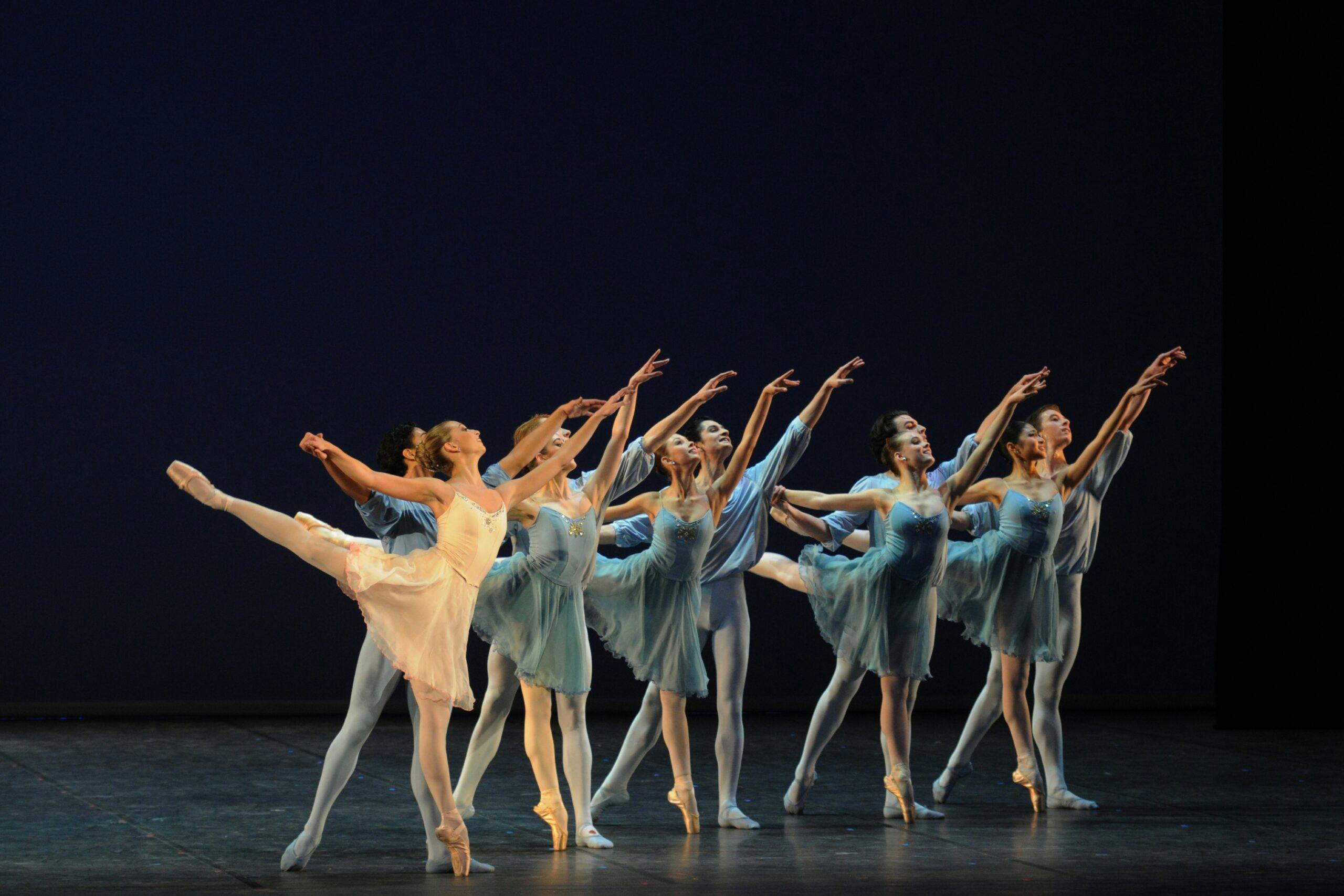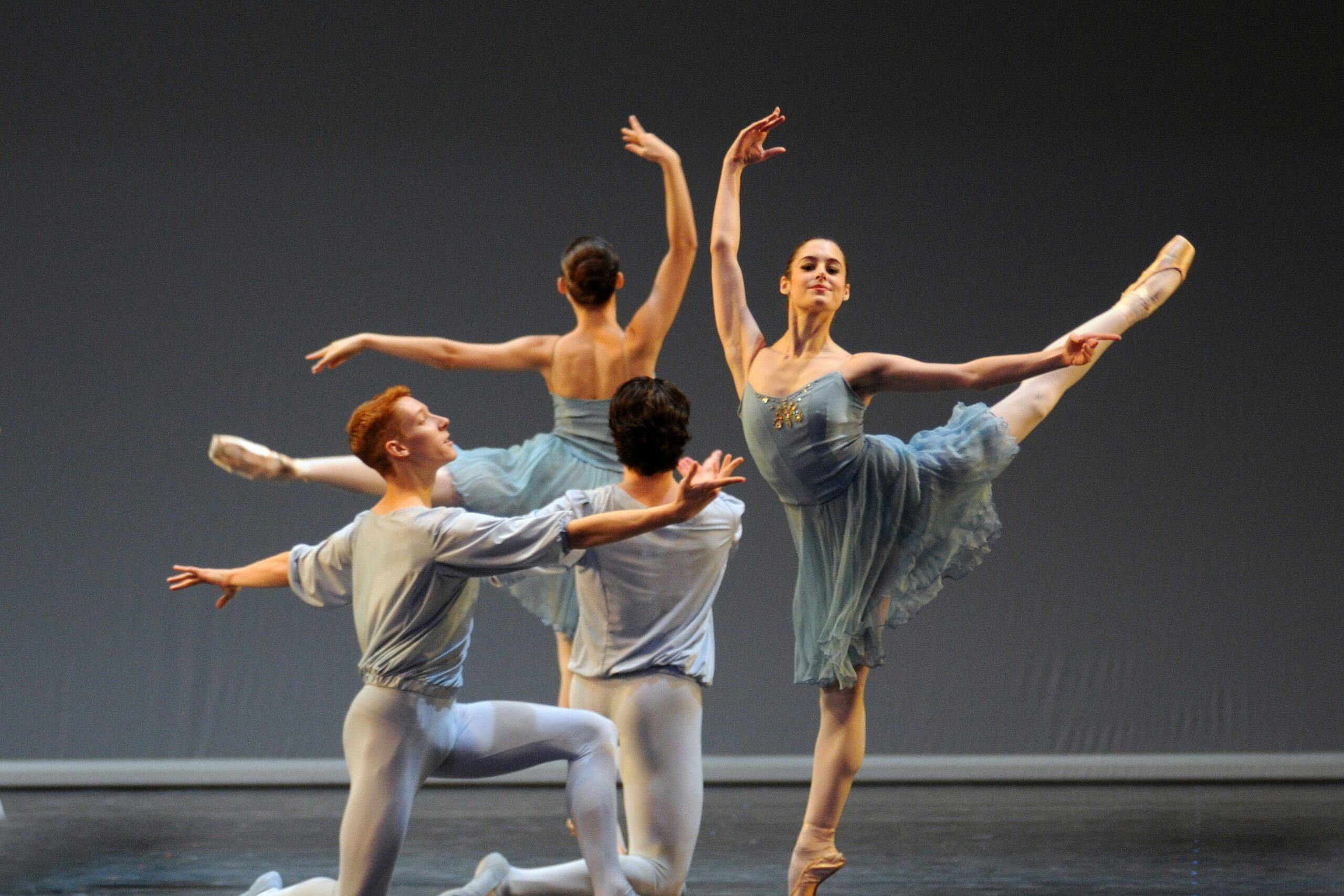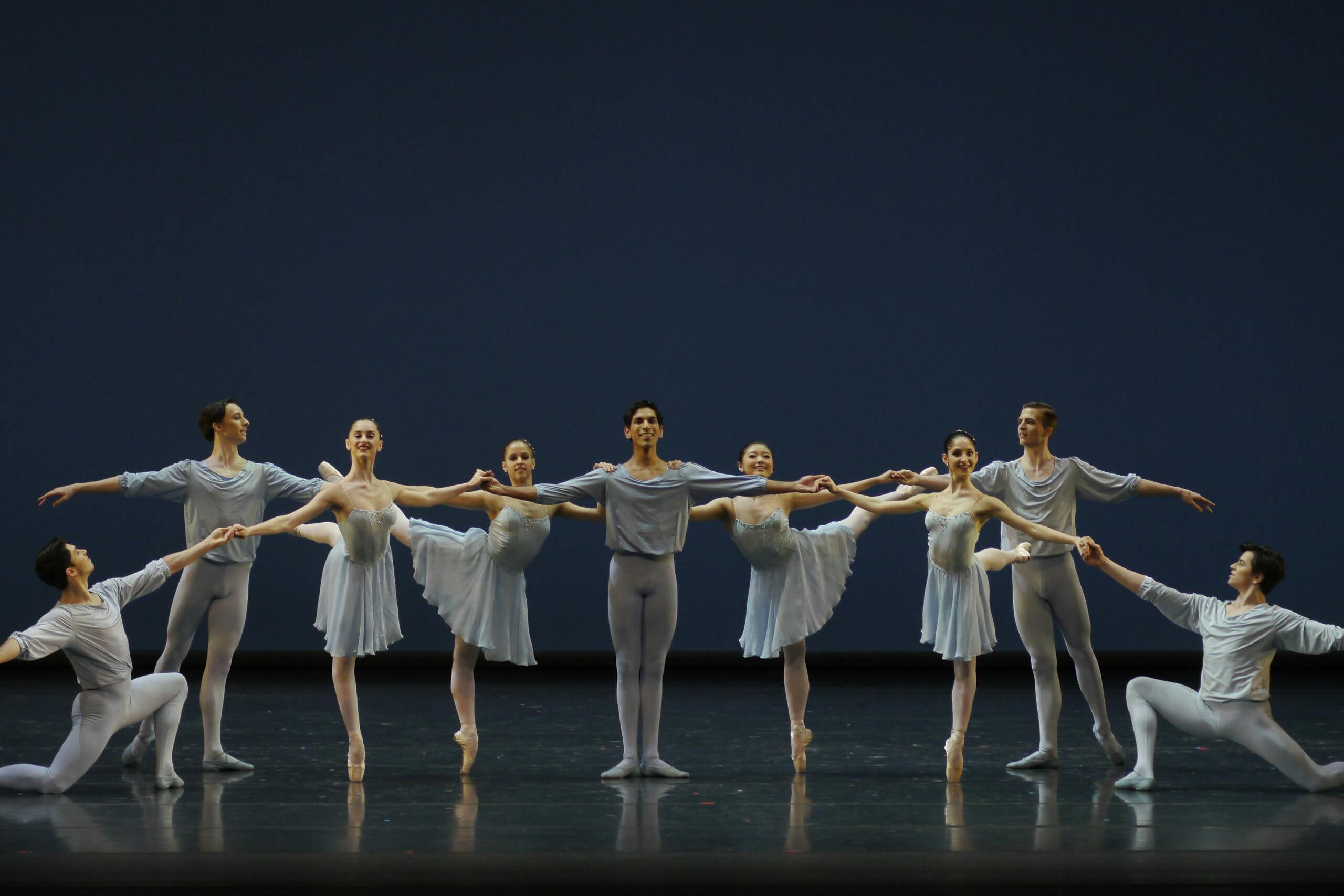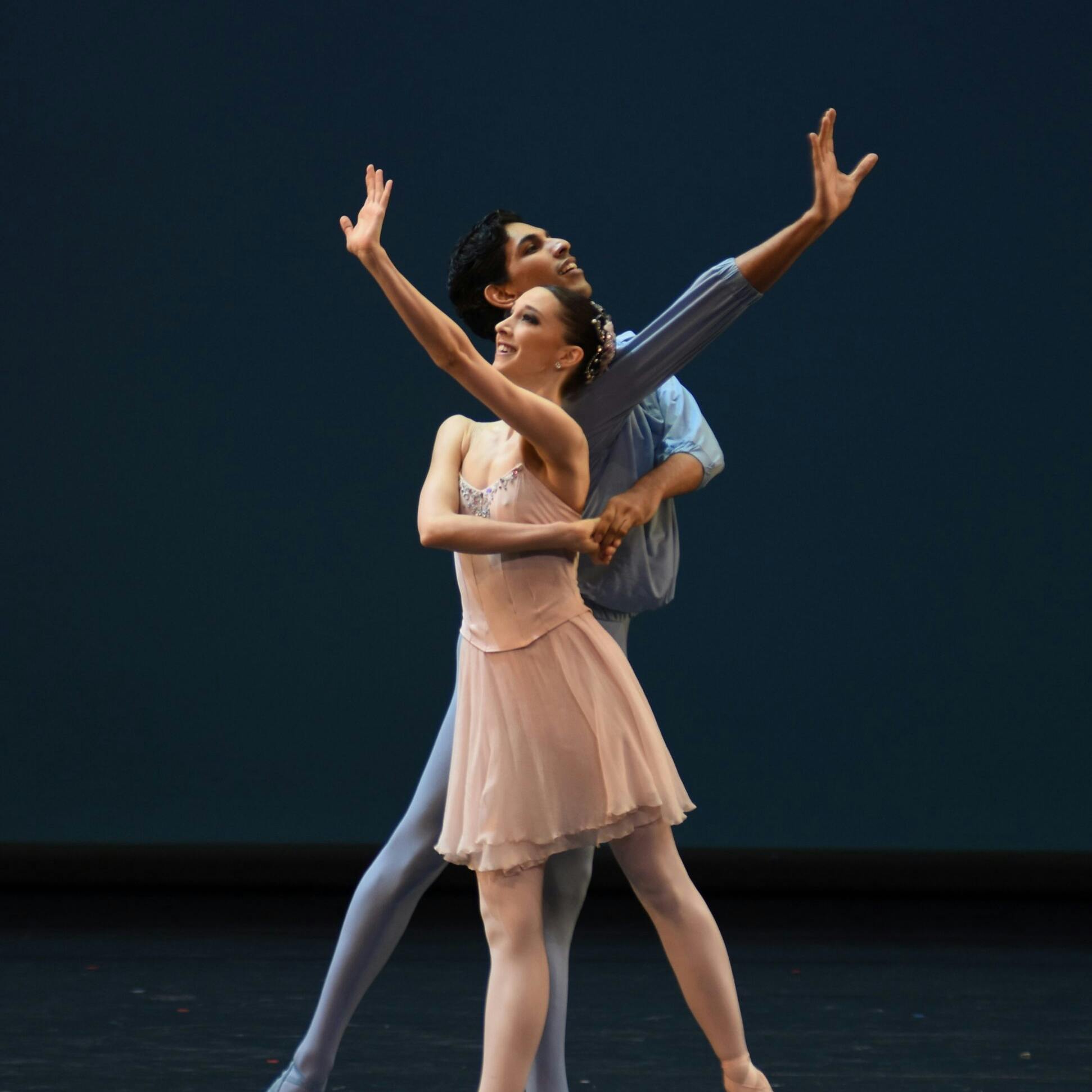Bayerisches Junior Ballett München

Allegro Brillante
| Choreography | |
| Music | »Piano Concerto Nr. 3«, 1. Satz (1893) |
| Stager | Nanette Glushak |
When George Balanchine created «Allegro Brillante», he said that the piece “contains all I know about ballet”. Taking into account the vast spectrum of his choreographic oeuvre, it is clear that he was not joking. He is best known for his adoration of the ballerina figure, and Maria Tallchief, the originator of the ballet’s infamously difficult principal role, characterised the piece as having “an expansive Russian romanticism”. «Allegro Brillante» marks a return to Balanchine's origins and retrospectively becomes a celebration of his training at Saint Petersburg’s Imperial Ballet School and his time with the Mariinsky Ballet.
Piotr Tchaikovsky’s Third Piano Concerto sets a vigorous pace for light-footed step sequences that rely on precise timing and a generous use of épaulement (the cultivated carriage of the shoulders in space). Originally written as a symphony, Tchaikovsky converted the score into a concert piece for piano and orchestra. The grandeur of his original intentions remains evident in the melodic richness of the orchestration. Coupled with Balanchine’s intricate choreography, the music evokes the composer’s famous ballet scores in a homage to the art of ballet itself.
«Allegro Brillante» has a small cast of five couples, and when it is restaged by ballet companies worldwide, it is customary for the roles to be exclusively filled by the senior ranks of the company. This is precisely what makes the ballet such an important addition to the repertoire of our company: The piece pushes the dancers to their limits and at the same time doesn’t allow them to get away with anything. Having completed their professional training, dancers arrive with a solid and reliable technique, but the quicksilver and stealthy endurance required by ballets such as «Allegro Brillante» challenges them to achieve far more than they had originally assumed they were capable of as young professionals.
ABOUT GEORGE BALANCHINE
George Balanchine was at the forefront the development of classical ballet in the 20th century. His consistently extraordinary choreographic invention is perhaps second to none. From his roots in the Russian tradition and later migration to the West with Diaghilev’s infamous Ballets Russes, it was only when Balanchine met Lincoln Kirstein in New York that he was finally able to achieve the full scale of his artistic vision. Founding the School of American Ballet in 1934 and later the New York City Ballet in 1949, Balanchine cultivated generation upon generation of dancers, who contributed in important ways to the art form we know today.
The performance of «Allegro Brillante», a Balanchine® Ballet, is presented by arrangement with The George Balanchine Trust and has been produced in accordance with the Balanchine Style® and the Balanchine Technique® Service standards established and provided by the Trust.
First premiered on 1 March 1956 at City Centre of Music and Drama in New York City
Premiere on 1 November 2012 as part of a matinée by the Heinz-Bosl-Stiftung at the Nationaltheater Munich
Rehearsal Photos
Performance Photos
Rehearsal Trailer














